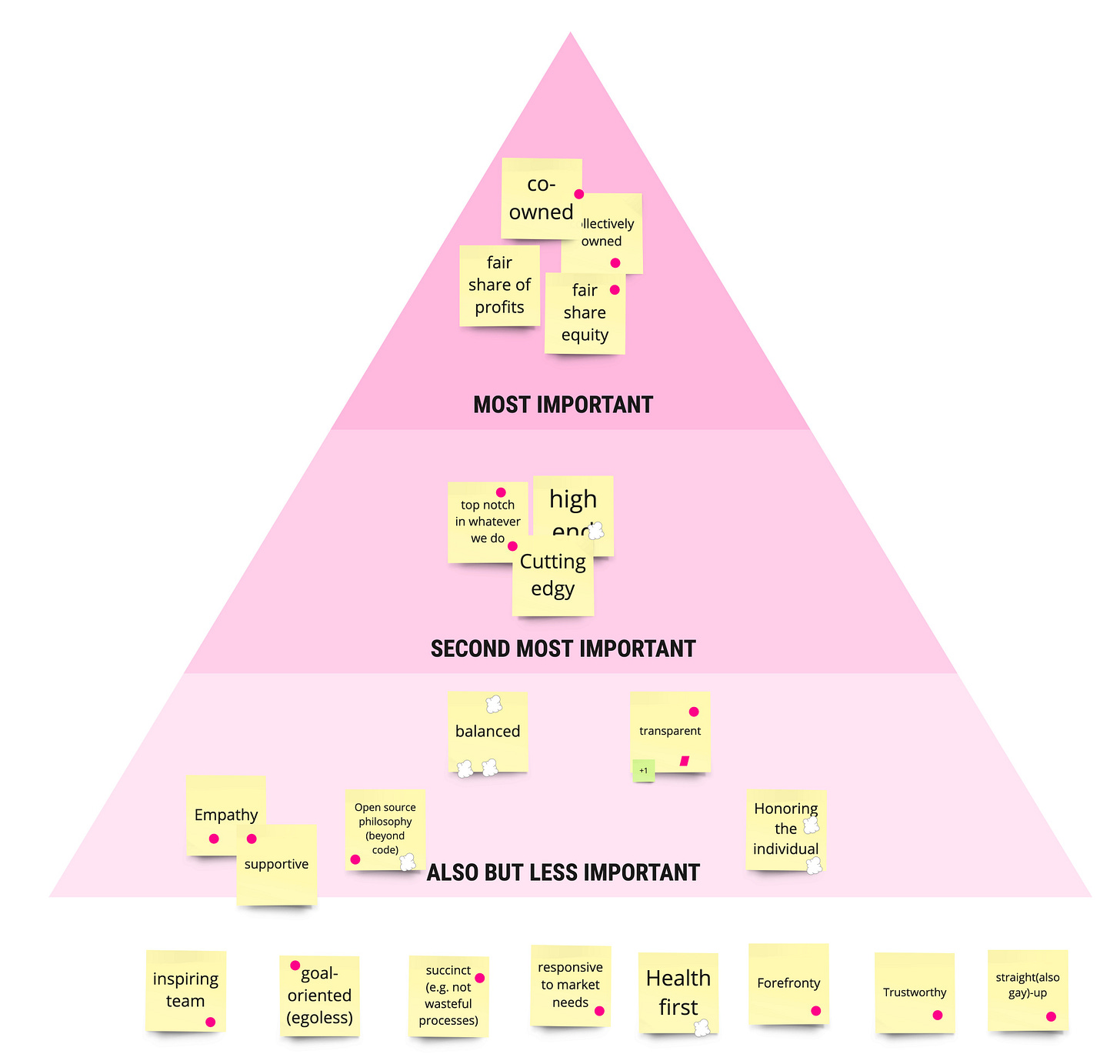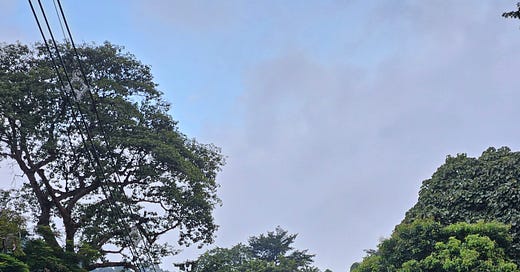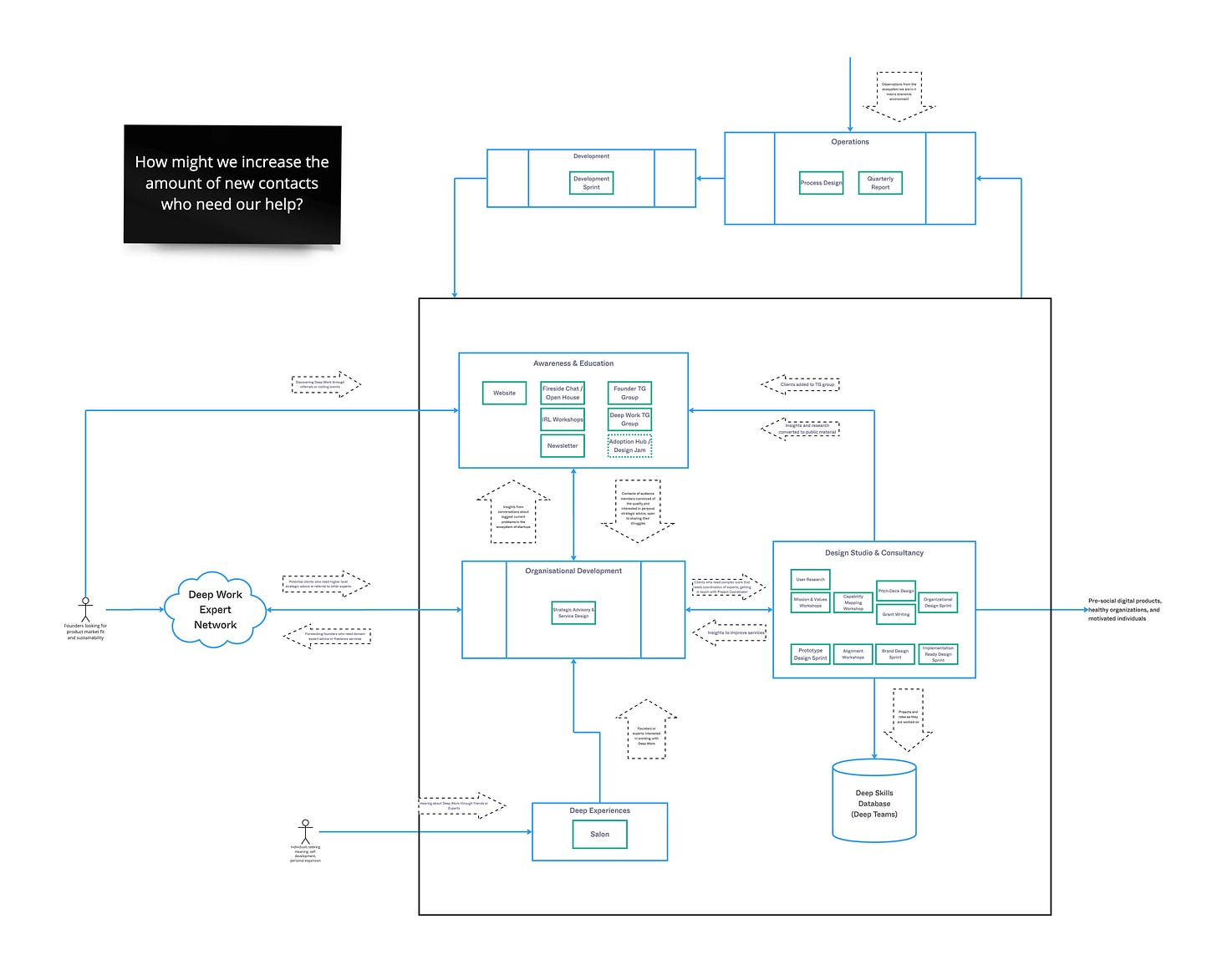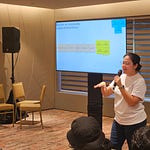Hello everyone!
Over the last few weeks, I have been relaxing a bit in nature, in a small town called Krabi. I used that time to reflect on our organizational development over the last few months.
So today I’m sharing a summary of some of the patterns I could identify with the help of a few friends.
While exploring Thailand, I’m also thinking about how we can design more accessible IRL experiences.
Recent internal updates
Our learning session two weeks ago was great, you can listen to the recording here and join our next one on January 3rd here. I will add the Twitter Spaces link soon.
We’re working on the next BioDAO from bio.xyz, starting the next organizational design session on Thursday.
Value-aligned public appearance
A few years ago, we defined our values and mission as an organization. These have guided my approach to outward-facing communication.

As a collective that is known for high quality, empathy, and transparency we are already really good at providing our clients with a unique experience through our work and collaborative sessions.
However, I am also starting to pay more attention to the way people learn about us before engaging in work. Here are some changes I am considering:
Improve the professionalism of my video calls (camera, lighting, background, clothes…)
Renaming some roles, like Project Manager → Project Coordinator
Deliverables, educational material, and handouts based on our brand design
Many people perceive work and meetings as an unpleasant necessity. So I think we can leverage public content to set the expectation of delightful collaborations.
If we can avoid immediately falling into the category of a traditional agency or consultancy, we will attract more interesting clients. More on that below.
Finding value-aligned ways to attract clients
The biggest challenge I found this year working on business development was communicating the value of our offering and selling what matches customers’ needs without compromising on our values. This means avoiding traditional social media marketing, annoying ads, and plastering our logo where it might feel out of place.
Let’s review how we have attracted clients so far, and then see how we can reinforce the strategies that seemed to make them happy while delivering high-quality work.
This diagram shows how our clients have found us and worked with us in the past:
Based on past paid projects, clients appreciated us for:
Helping increase adoption and improve the user experience
Facilitating alignment
Providing clarity and identifying blind spots
Supporting with strategy and next steps
So far, we haven’t managed to predictably scale our services because the messaging and funnel is not clear yet.
Is our offering narrow?
My focus is still on organizational design sessions and giving general advice on progress and adoption. Considering that we also provide a lot of other services, like visual design, workshop facilitation, copywriting, etc., I am keeping track of the projects but delegating everything that does not fit under my expertise.
What is our market and audience?
I’ve been very focused on investors and startups this year but faced some resistance. Many founders have little resources or no interest in revenue generation. Most investors and startups with funding don’t seem to believe that structural changes to their organization can increase their runway and speed up finding product-market fit.
That said, from the most recent projects, five stood out to be particularly exciting:
Talentir - a payment distribution platform for social media that' is looking to increase user adoption.
An established blockchain project called Scroll.io that cares about its community.
A small Spanish web2 team building a product with a clear mission and a desire for internal transparency.
Bio.xyz, who have been around for a long time and care about building out their ecosystem of DAOs.
DLogos, a platform that aims to encourage high-quality conversations and needs more clarity over its audience to design an engaging user experience.
All of the main points of contact were founders, or team leads. They were also friends of mine that I had previous conversations with, except for the Spanish team.
Am I asking the right questions?
With the recent conversations, I worked on my ability to educate and advise as an organizational developer and strategic partner. I assume that this consultation is a crucial part of establishing trust and rapport before engaging in paid work.
I received this response after asking more targeted questions than felt comfortable, before providing a list of suggested next steps, along with public resources and contacts to relevant experts from Deep Work. The message is a good sign that it’s a good idea to continue doing it.
Are we priced adequately?
Our pricing has always been a difficult topic for me, but I’m getting a better understanding of how to arrive at a reasonable number with confidence. Pricing is an important signal for the value and in the past my default was to underprice and overdeliver, which is not sustainable and sends the wrong message.
Alex Hormozi describes a value-based estimation to define pricing that I found interesting:
How much time and money does it cost the customer not having our solution on average? As an example, without an alignment session we facilitate, 10 people would need about 45 conversations to arrive at a common ground. For a startup that pays employees an hourly rate of $50, this process would cost $2,250 and take several weeks.
What is 10-20% of that amount? In the case from above, it’s $225-450.
What is the solution we can provide to our customers? We can facilitate a 60-90min session to get the same result. Hence, pricing a session at a minimum of $500 would make sense considering the extra value of an unbiased facilitator, providing expertise in coordination, and note-taking, all in a much shorter time frame.
In the long term, we can take the same approach to estimate and calculate more complex solutions we can provide. For example, based on my research from early this year, most startups end with an unusable product after 5 years and $5-10m USD due to a lack of adequate user research, internal alignment, and organizational development.
In theory, it’s not unreasonable for us to design organizations that “outlive their founder”, produce “accessible products“ and unlock the team’s true potential at a cost of $500-$1m.
Next steps
Based on the reflection above, we have our core services and understand that the happiest clients value the conversations they have with me/us. My conclusion is that by staying memorable and creating high-quality educational material that reflects my tone of voice, we should be able to reinforce this process.
A small group of us just finished a short BD session and decided on a few actionable tasks for the next few weeks. Feel free to join our conversation in Discord on #business-development.
Embedding communities in local environments
On a completely different note, I’m exploring the setup of an IRL home base.
Over the recent weeks, I have had several conversations with event organizers and retreat organizers about their goals and experiences. Retreats and digital nomad communities often find isolated spots in affordable places and end up disrupting the local economic climate by pushing up prices or neglecting their environmental impact.
Discussing a more web3-native approach to event- and retreat design, it becomes clearer to me that it’s important to consider activities that benefit the local community too. This way, we can avoid following extractive behaviors and provide value to the environment we’re coming to.
Here are a few projects that are thinking in this direction already:
MetaCamp will feature activities to help locals in Costa Rica.
DWebCamp in Brazil will feature permaculture events and connect with locals.
Rooral is integrated into a local Spanish village.
Maysou a Noste are located among three villages in the south of France and host events with neighbors.
Liminal Futures (formerly Liminal Web) builds online-native embassies to support and rejuvenate small towns in Italy.
Have a relaxing end of the year, and I’ll see you in 2025!
Andrej















Share this post